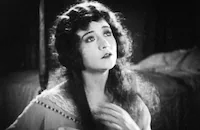The Lady Refuses

Brief Synopsis
Cast & Crew
George Archainbaud
Betty Compson
John Darrow
Gilbert Emery
Margaret Livingston
Ivan Lebedeff
Film Details
Technical Specs

Synopsis
On a foggy London night, Sir Gerald Courtney saves June, a prostitute, from being arrested on his doorstep by telling the police that she is his niece. In need of money, June agrees to use her charms to help Gerald rescue his son Russell from the clutches of Berthine Waller, a gold digger. After buying a lavish wardrobe on Gerald's expense account, June shows up at Russell's apartment building and, as a drunken Russell watches, pretends to be locked out of the apartment that she has just rented below his. While maintaining a ladylike facade, June lures him into her apartment and cajoles him into passing out on her bed. The next morning Russell wakes up in June's bed, having stood up Berthine the night before, and is mortified. After June assures him that he is still a gentleman, Russell begins to date her, then stops drinking and going out with Berthine and starts a promising career as an architect. Satisfied that Russell has reformed, Gerald and June declare their love for each other, and June, sure that he will understand, vows to tell Russell the truth. When June confesses that she is in love with his father, a heartbroken Russell denounces both her and Gerald and telephones Berthine. To prevent Russell from seeing Berthine upstairs, June pulls him into her apartment and pretends to be the callous "lady for hire" he believes her to be. Drunk, Russell passes out on June's bed again, unaware that Berthine has been murdered in his apartment by her jealous fortune-hunting partner, Nikolai Rabinoff. When Russell wakes up, he finds a farewell note from June, which admonishes him to forgive his father. Now the police's main murder suspect, Russell hides in his father's house but refuses to name June in his alibi. Eventually, June reveals that Russell spent the night in her place and is rejected by Gerald. Devastated by Gerald's lack of trust, June exits into the fog before Russell can explain that he was alone in June's apartment. A shamed Gerald then vows to follow June "wherever" she goes.

Director
George Archainbaud
Cast

Betty Compson
John Darrow

Gilbert Emery

Margaret Livingston
Ivan Lebedeff
Edgar Norton
Daphne Pollard
Reginald Sharland
Crew

Videos
Movie Clip


Film Details
Technical Specs

Articles
The Lady Refuses

The Lady Refuses
Quotes
Trivia
Notes
The working titles of this film were Children of the Streets, Ladies for Hire, A Lady for Hire and Forgotten Women. Motion Picture Herald reviewed the picture under both Lady for Hire and Forgotten Women. A Film Daily release chart claims that the screenplay was taken from Robert Milton and Guy Bolton's "A Lady for Hire," but it is not clear whether this title refers to a screen story or a literary work. All other sources refer to the story as a screen "original." An October 1930 Film Daily news item announced that Jane Murfin was adapting the story, but her contribution to the final film has not been determined. A Film Daily pre-production news item announced H. B. Warner as Compson's co-star, but that actor did not appear in the final film.














